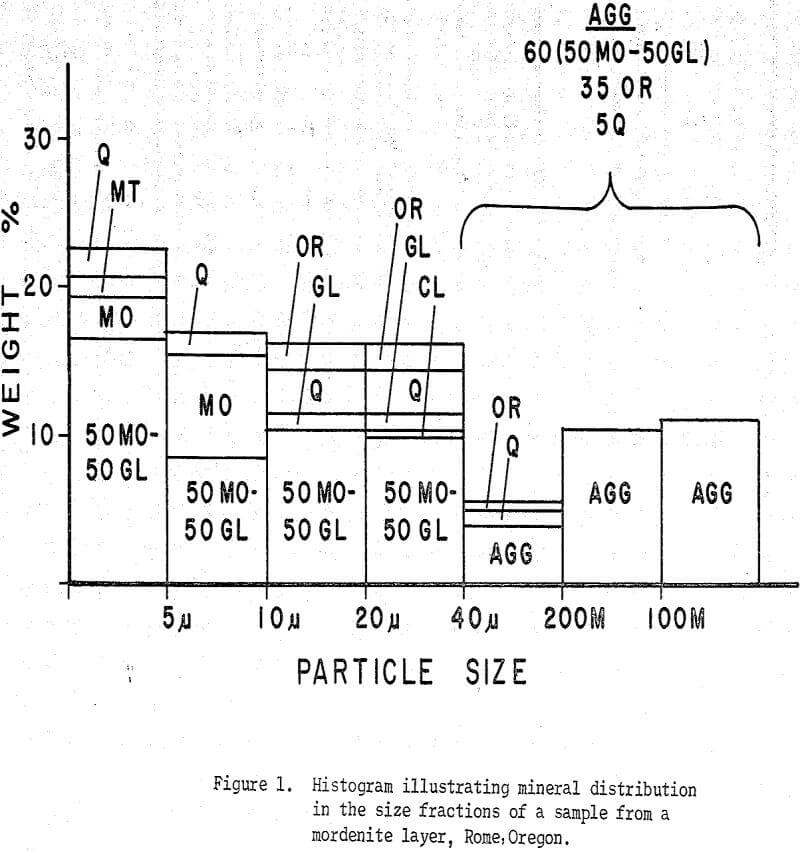Zeolite ores and protores occur in extensive deposits in the western United States. A recent paper describes the general geology and mineralogy of these deposits and their geographical distribution. The zeolites are alkali- and silica-rich varieties of mordenite, erionite, chabazite, phillipsite, ferrierite, and clinoptilolite.
The Tertiary zeolite ores consist of one or more zeolites (mordenite, erionite, chabazite, phillipsite, ferrierite, clinoptilolite) formed as alteration products of pyroclastics. In addition to unaltered volcanic glass the gangue minerals include quartz, cristobalite, tridymite, opal, feldspar, montmorillonite, hornblende, calcite, gypsum, thenardite, iron oxides, and in some cases one or two other zeolites. Removal of the silica minerals and glass is the main problem in ore beneficiation.
Mineralogical analysis of size fractions obtained on zeolite ore samples dispersed with minimal grinding provides a quantitative determination of the constituents, reveals the microtexture, and gives the size distribution of the single crystals and various types of aggregates and particles. These data are useful for beneficiation as they aid in the choice of the initial method of disaggregation and give the size ranges in which the zeolite and gangue minerals concentrate.
The bulk mineral compositions, as determined by analysis of the size fractions; abbreviations used are mordenite (MO), clinoptilolite (CL), erionite (ER), chabazite (CH), phillipsite (PH), analcime (AC), glass (GL), montmorillonite (MT), quartz (Q), orthoclase (OR), calcite (CAL), iron oxide (FE-OX), tridymite (TR), cristobalite (CR), and aggregate (AGG).
Although some zeolite layers require little if any mineral beneficiation, it is evident that different methods of disaggregation and separation will apply to the various deposits. Calcite and montmorillonite contribute to cemented aggregates but most of the polyphase aggregates result from interlocking zeolite crystals. As with the highly silicified hydrothermal zeolite ores not described in this paper, those ores which are principally zeolite-glass require comminution before subsequent treatment.




